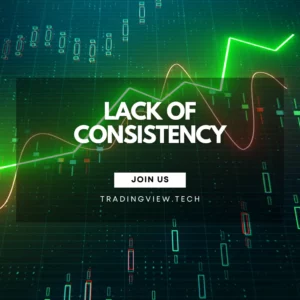In the fast-paced world of trading, where price movements, chart patterns, and breaking news dominate the attention of market participants, an often-overlooked aspect quietly undermines profitability—trading fees and costs. While each individual fee may seem negligible at a glance, their cumulative effect can have a significant and often underestimated impact on a trader’s bottom line. From broker commissions and bid-ask spreads to overnight financing charges and hidden platform fees, these costs can quietly eat away at returns, particularly for those who trade frequently or with smaller profit margins. The objective of this text is to spotlight the critical role that trading costs play in shaping overall performance and to offer insights into how traders can manage, minimize, and incorporate these costs into a sustainable trading strategy.
Understanding the Types of Trading Costs
A clear grasp of the various fees involved in trading is foundational for any trader aiming to preserve and grow their capital. Trading costs can be broadly categorized into visible (explicit) fees and hidden (implicit) costs.
Spreads are one of the most common and least understood forms of cost. The spread is the difference between the bid and the ask price of a financial instrument. Even though it may appear small, such as a 2-pip spread on a forex pair, it directly impacts the entry and exit price of every trade. For high-frequency traders, the cumulative cost of spreads can be substantial, especially in volatile or illiquid markets where spreads tend to widen.
Commissions are more straightforward—these are fixed fees charged by brokers either per trade or per share/contract. While some brokers offer commission-free trading, this often comes with wider spreads or less favorable execution prices. For traders executing multiple trades daily, even a small commission (e.g., $1 per trade) can add up quickly.
Overnight financing fees, also known as swap fees, are charged when holding leveraged positions overnight. These fees are typically based on the interest rate differential between the currencies or the cost of borrowing the underlying asset. For position traders or those who hold trades over several days, these seemingly minor charges can significantly affect profitability.
Withdrawal and account maintenance fees may not directly impact each trade, but they influence overall account management costs. Some brokers impose charges for withdrawing funds, inactivity, or even data feeds and trading tools.
Additionally, traders must account for slippage, which occurs when a trade is executed at a price different from the expected price, usually due to market volatility or low liquidity. While not a fixed fee, slippage is an indirect cost that can substantially affect results, particularly for traders using market orders in fast-moving environments.
In essence, failing to fully understand these cost structures can lead to inaccurate profit projections, flawed risk management, and ultimately, underperformance.
The Cumulative Impact of Costs on Frequent Trading
For traders who engage in multiple trades daily—scalpers, day traders, or algorithmic traders—the cumulative effect of trading costs can transform even the most promising strategy into a losing one. The issue isn’t just the existence of fees, but how frequently they are applied. Each transaction triggers a set of costs: the spread, a commission (if applicable), and possibly slippage. While a single fee may be insignificant, trading hundreds or thousands of times a month causes these costs to accumulate rapidly.
Consider a scalper making 20 trades per day with a commission of $1 per trade and an average spread cost of $2 per round trip. That amounts to $3 per trade, totaling $60 daily, $1,200 per month, and $14,400 per year—just in trading costs. If their average profit per trade is $5, nearly 60% of their gross earnings could be consumed by fees alone. In such cases, even minor inefficiencies in execution or poor cost management can render a strategy unprofitable.
Moreover, frequent trading magnifies slippage and market impact, especially when using large order sizes or trading in low-volume markets. Each execution may slightly move the market or be filled at suboptimal prices, increasing the average cost per trade beyond the visible fees.
Even for automated trading systems, which operate with precision and speed, the sheer volume of trades can result in thousands of dollars in monthly fees. Many traders overlook these figures when backtesting strategies, leading to unrealistic performance expectations. Simulated trades that seem profitable on paper can fail in live environments once real-world costs are factored in.
Ultimately, frequent trading creates an environment where the odds are increasingly stacked against the trader unless strict cost control measures are in place. Recognizing and quantifying these costs is not just a good practice—it’s a necessity for long-term survival in the markets.
Choosing the Right Broker
Selecting the right broker is one of the most critical decisions a trader can make, as it directly influences both the cost-efficiency and the overall trading experience. While traders often get enticed by sleek platforms or aggressive marketing, it’s essential to look beyond surface features and evaluate a broker’s fee transparency, pricing structure, execution quality, and reliability.
One of the first distinctions to understand is the commission-based vs. spread-based model. In a commission-based model, brokers charge a fixed fee per trade, usually in addition to the market spread. These brokers often offer very tight spreads—sometimes as low as 0.0 to 0.2 pips for forex pairs—making them suitable for scalpers or high-frequency traders who rely on minimal price movement to generate profits. The commission is predictable and usually disclosed upfront, allowing for clear cost calculations.
On the other hand, spread-based brokers make their profit by widening the bid-ask spread instead of charging a separate commission. These brokers are often marketed as “commission-free,” which appeals to beginner traders. However, the actual cost per trade can sometimes be higher than that of a commission-based model, especially during volatile market conditions when spreads tend to widen significantly. For traders using tight stop-losses or short-term strategies, this wider spread can make the difference between profit and loss.
A crucial aspect of broker selection is transparency. The best brokers provide detailed fee breakdowns and do not bury important information in fine print. Reputable brokers offer demo accounts where traders can test live conditions and evaluate spreads, commissions, slippage, and execution speed in real-time without risking capital. Additionally, some brokers charge non-trading fees, such as inactivity fees, platform usage charges, or currency conversion fees—these can add up over time, especially for less active traders.
Execution speed and order fill quality also play a role in cost. A broker with poor infrastructure may delay order execution, causing slippage and impacting profit margins. ECN (Electronic Communication Network) and STP (Straight-Through Processing) brokers often provide more direct access to liquidity providers, resulting in better pricing and faster execution compared to dealing desk brokers who may take the opposite side of your trade.
Other important factors include regulation and trustworthiness. Regulated brokers are held to higher standards of financial integrity, client fund segregation, and dispute resolution, which offers traders an added layer of protection.
In summary, choosing a broker is not simply about the lowest advertised cost—it’s about balancing fee structure, execution quality, platform reliability, and transparency to ensure your trading strategy is supported, not hindered, by your broker.
Cost-Efficient Trading Strategies
One of the most effective ways to reduce trading costs is to adopt strategies that require fewer trades. This may seem counterintuitive, especially in a culture that glamorizes constant market engagement, but reducing trade frequency can significantly enhance net profitability by minimizing the compounding effects of fees, slippage, and spread costs.
Swing trading and position trading are two such approaches that focus on capturing larger price movements over days, weeks, or even months—allowing traders to place fewer trades while still achieving meaningful returns. Since these strategies involve holding positions for extended periods, the cost per trade becomes a smaller percentage of the overall profit, especially when compared to day trading or scalping, where each trade must overcome a dense barrier of costs just to break even.
For example, a swing trader may make only 10–15 trades per month. Even if each trade incurs a $3 fee (spread + commission), the total monthly cost is just $30–$45. Contrast that with a scalper making 10 trades per day—amounting to 200 trades a month—and the fees could balloon to over $600 for the same trade size. This reduction in cost allows swing and position traders more breathing room in terms of risk-reward ratios and gives strategies a better chance to succeed over the long term.
Moreover, longer-term strategies allow for better decision-making, as they rely less on minute-to-minute volatility and more on broader market trends, fundamental analysis, or macroeconomic cycles. This reduces the emotional strain of reacting to constant price fluctuations and avoids the “death by a thousand cuts” scenario caused by frequent fee exposure.
Cost-efficient strategies also benefit from less slippage, since trades are often placed with limit orders at strategic price points rather than rushed market orders executed during high volatility. Furthermore, by reducing screen time and the number of trade setups monitored each day, these strategies promote discipline and patience, two traits that consistently correlate with successful trading outcomes.
Of course, longer-term trading does come with trade-offs—namely, exposure to overnight risk and swap fees. But with proper risk management and broker selection (e.g., using a broker with low or positive swap rates for your position), these costs can be mitigated.
Tools to Track and Calculate Trading Costs
In modern trading, where data and analytics are pivotal, traders have no excuse to remain blind to the fees eating away at their profits. Fortunately, there are a wide array of tools—ranging from professional software to simple spreadsheets—that can help estimate, monitor, and analyze trading costs in real time and over longer periods.
One of the most accessible and customizable tools is a spreadsheet-based cost calculator. Using programs like Microsoft Excel or Google Sheets, traders can build a simple model to estimate total fees per trade based on variables like spread, commission, trade size, number of trades per day, and holding time. These calculators can be expanded to include swap fees, slippage estimates, and even taxes in some jurisdictions. Many brokers and trading communities offer pre-built templates that can be downloaded and tailored to individual trading styles.
More sophisticated traders might turn to portfolio tracking software or platforms that integrate with brokerage accounts. Tools like TradingView, MetaTrader 4/5, cTrader, or NinjaTrader often include built-in analytics that track realized and unrealized P&L, commissions, and swap fees. Some platforms offer plug-ins or third-party add-ons that provide even more detailed cost analysis, breaking down each trade’s net profitability after all fees.
Broker-provided statements and fee reports are another critical source of insight. Many reputable brokers now offer detailed monthly or weekly reports that show total commissions, spread costs (sometimes estimated as a monetary figure), overnight fees, and other deductions. Analyzing these reports regularly helps traders understand how much of their capital is being spent on fees versus earned from actual market performance.
For those who trade at scale or use automated strategies, API-based analytics tools or custom-built dashboards can pull real-time trade data and match it against broker fee structures. These systems can dynamically calculate cost per trade, average cost per strategy, and even model “what-if” scenarios to simulate different frequency levels or broker conditions.
Additionally, online fee comparison tools—offered by websites like Myfxbook, Forex Peace Army, or BrokerChooser—allow traders to benchmark broker costs and select the most competitive provider for their needs. While these tools often focus on forex and CFD markets, similar comparisons are available for stock, crypto, and options brokers.
Ultimately, the goal of using these tools isn’t just to track costs passively—it’s to use this information to make smarter decisions. By identifying high-cost patterns or inefficiencies, traders can refine their strategy, reduce trade frequency, or even switch brokers to optimize long-term profitability.
Integrating Costs into Profit Calculations
In the trading world, what matters most is net profit, not gross profit. Yet many traders, especially those early in their journey, fall into the trap of evaluating strategy performance or trade outcomes without accounting for fees, spreads, commissions, or slippage. This oversight can create a dangerously inflated perception of profitability, leading to poor decision-making and disillusionment when actual returns don’t match expectations.
A common mistake is to look at a trade that gained 1.5% on capital and assume it’s a straightforward success. But once the spread, commission, and swap fees are included—especially if the trade was opened and closed within a short time window—the actual net gain might be closer to 0.8% or less. For traders who operate with tight profit targets and high frequency, these cost discrepancies can turn a seemingly winning system into a breakeven or losing one when implemented in live markets.
That’s why it’s critical to build trading plans and performance assessments around net outcomes. This means always subtracting the cost of the spread, commissions, and any relevant fees from your projected profit at the planning stage. When backtesting, be sure to simulate realistic fees. Many trading platforms allow users to input custom fee settings that reflect real-world broker conditions. This small step can drastically improve the accuracy and reliability of backtested results.
Additionally, understanding the role of costs in profit projections helps traders fine-tune key performance metrics such as the Risk-Reward Ratio (RRR), Profit Factor, and Expected Value of trades. For example, a system with an RRR of 1.5:1 may look attractive on paper, but if each trade incurs a 0.2% fee, the net RRR drops, potentially making the system less viable. Similarly, profit factor calculations based on gross profits might overstate system efficiency unless adjusted for costs.
Realistic expectations also play a psychological role. Traders who factor in fees are less likely to overestimate potential returns or take excessive risks chasing unrealistic targets. It fosters a more grounded approach to trading, where consistency and cost-efficiency take precedence over flashy gains.In conclusion, trading without including costs in your P&L calculations is like running a business without knowing your overhead. Success in trading depends as much on managing expenses as it does on generating income. By making fee inclusion a habit, traders can set smarter goals, avoid avoidable pitfalls, and ultimately build a more sustainable and profitable approach to the markets.



